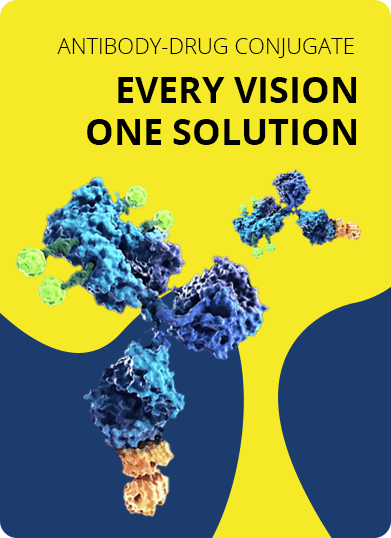- Home
- UTC Development
- Fragment-Drug Conjugate Development
- Antibody Fragment-Drug Conjugate Development
- SdAb-Drug Conjugate Development
SdAb-Drug Conjugate Development Service
In oncology, sdAbs without a linked Fc domain have many interesting potential applications. Their high thermal stability, high refolding capacity, and good tissue penetration in vivo make sdAbs ideally suited for specific and efficient targeting of tumor antigens. Armed with rich experience in sdAb development as well as antibody engineering and perfect drug-conjugation systems, Creative Biolabs provides one-stop sdAb-drug conjugates (NDCs) development services for worldwide customers.
Introduction of sdAb
Delivery to tumor cells in vivo is hampered by the large size (150 kDa) of conventional antibody-drug conjugate (ADC) composed of intact antibodies. The VHH domains of camelid heavy chain antibodies have been shaped by more than 50 million years of evolution for high solubility and stability, independent of a partner VL domain. As recombinant proteins, VHH are designated sdAbs or single-domain antibodies in reference to their small size in the nanometer range. A notable difference between the camelid VHH and the human VH domain is the length and orientation of the complementarity determining region 3 (CDR3) loop.
Since sdAbs do not display any of the solubility and aggregation problems typical of VH domains of conventional antibodies, it can be easily linked into dimers and multimers without the need for additional measures. Tandem cloning of two identical or different sdAbs connected by a linker peptide yields a bivalent molecule with higher avidity for the antigen. Crosslinking of a target by a sdAb dimer can induce apoptosis and other signaling cascades or internalization of the target molecule.
sdAb-drug Conjugate
The antitumor effects of sdAbs can be enhanced by coupling sdAbs to peptide, protein, and chemical drugs. Drug-equipped sdAbs combine the advantages of high specificity of the sdAbs, their potential intrinsic therapeutic effects as antagonists, good tissue penetration, and specific accumulation within tumors, with the cytotoxic effects mediated by the drug payload. Many studies reported the successful generation of NDC.
Conjugation Technologies
At Creative Biolabs, the platform for multi-specific (binding different targets), multivalent (binding identical targets), and bi-paratopic (binding different epitopes on the same target) sdAb molecules preparation have been successfully developed. The different sdAb building blocks are linked together with Glycine-Serine linkers with flexible lengths.
Since sdAbs are most commonly produced via expression, reactive amino acids such as cysteine can easily be introduced to specific locations on the sdAb using site-directed mutagenesis and subsequently exploited for highly-controlled payload conjugation. Lysine-based conjugation is one of the most widely used non-specific conjugation strategies. Besides, peptide-tagged sdAbs further provide an elegant means for site-specific and enzyme catalyzed conjugation of sdAbs to virtually any desired chemical compound. For example, genetic fusion of a sdAb to a C-terminal pentapeptide (Sortag) provides a substrate for site-specific C-terminal linkage of the sdAb to a small synthetic peptide, such as GGGX (X can be a lysine or cysteine residue conjugated by amide or maleimide chemistry to drugs). Approaches such as standard and novel chemical modifications, inclusion of specific tags are also available for NDC generation.
Service Features
- Identification of sdAbs with subnanomolar affinity for the target
- sdAb purification in high yields without aggregation or loss of functionality of the constituents
- Customized NDC design and development with multiple conjugation technologies
- Conjugation without losing any binding affinity
The small size and robustness of sdAb make them particularly suitable for targeting antigens in tumors where tissue penetration is critical. If you are interested in our NDC development services, please contact us for more information and a detailed quote.
Related Services
For Research Use Only. NOT FOR CLINICAL USE.

Online Inquiry
Welcome! For price inquiries, please feel free to contact us through the form on the left side. We will get back to you as soon as possible.
